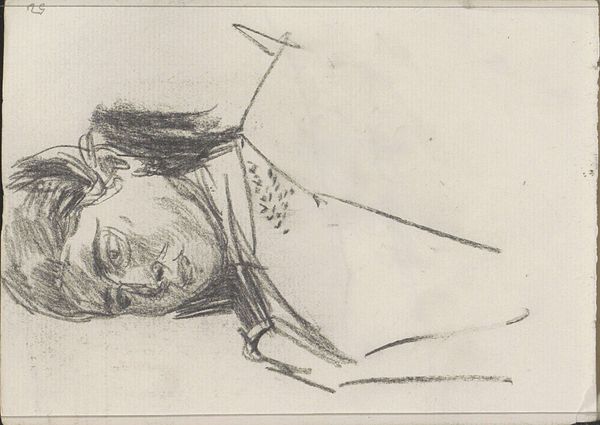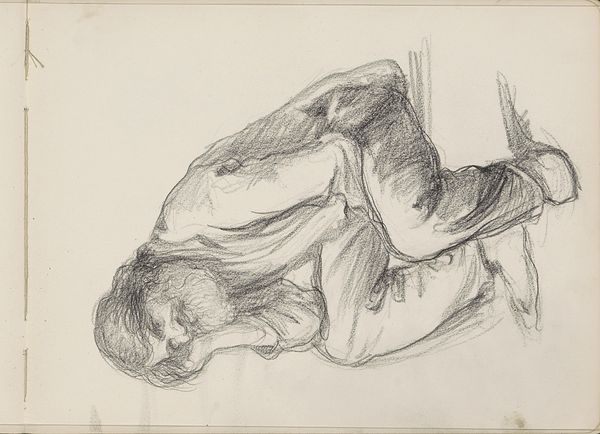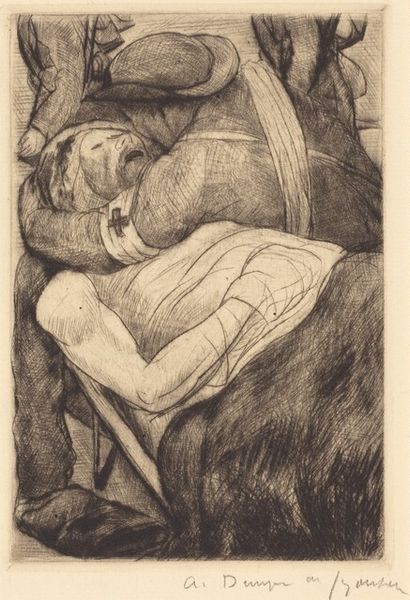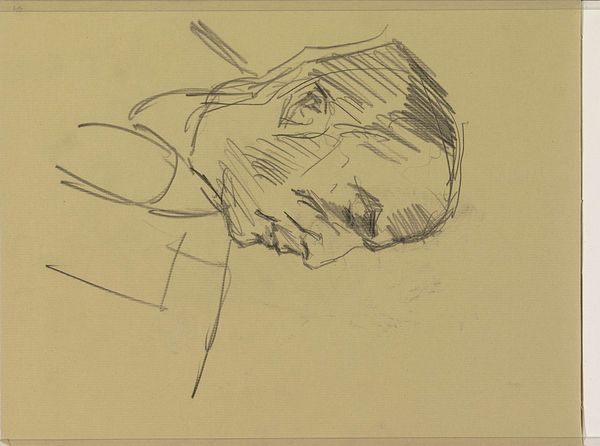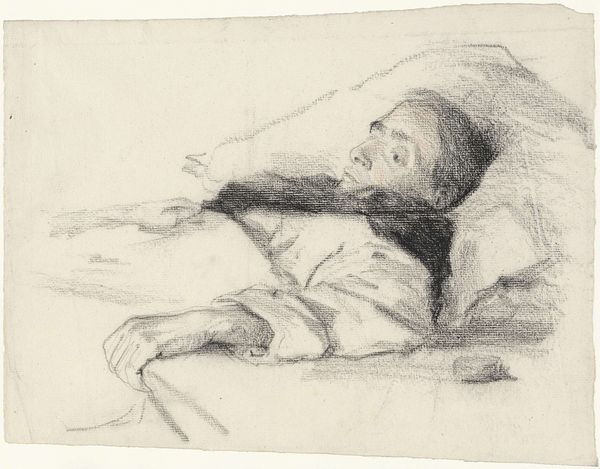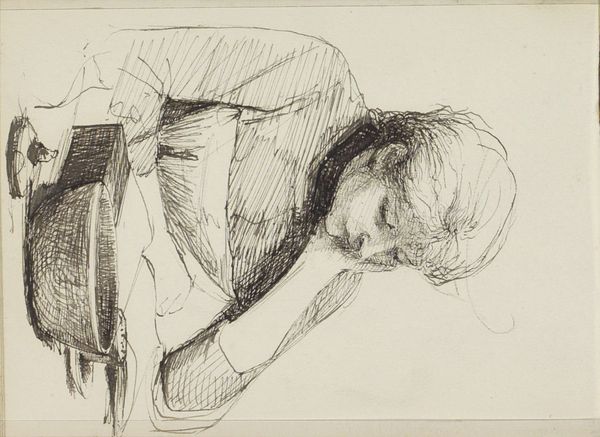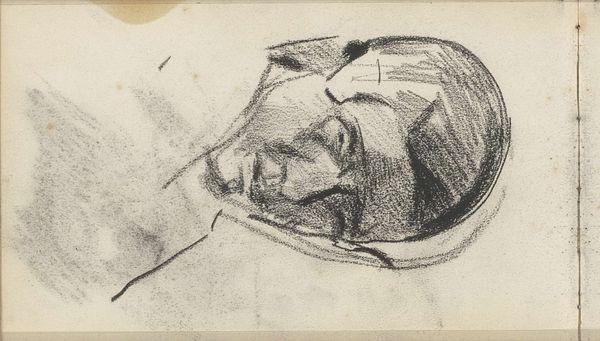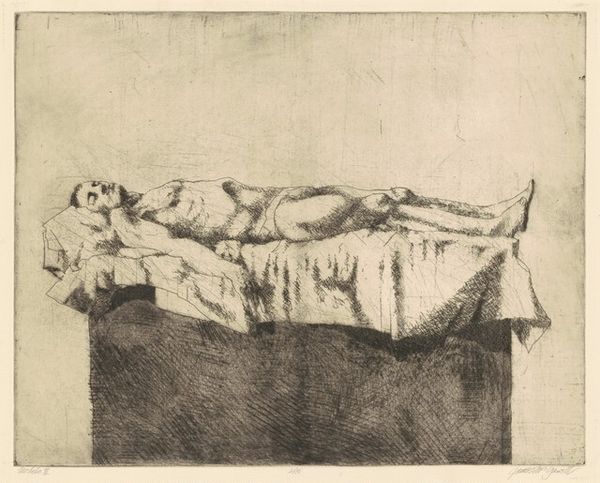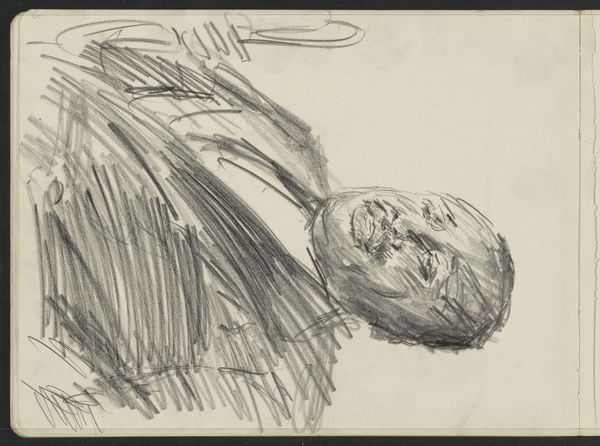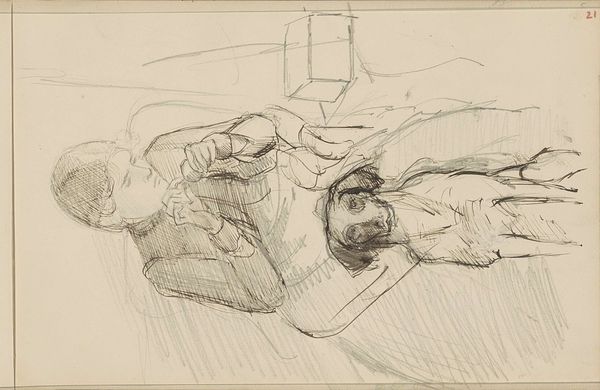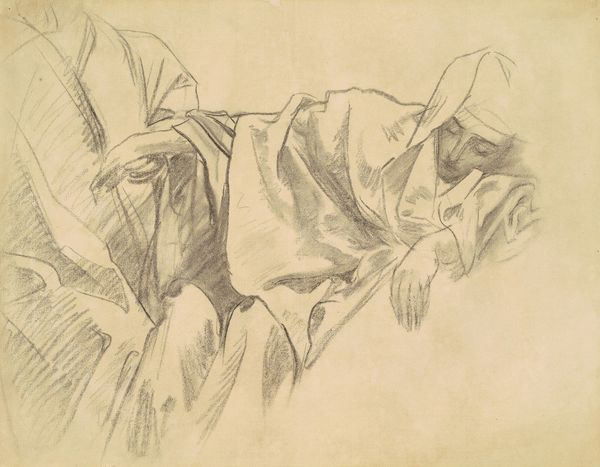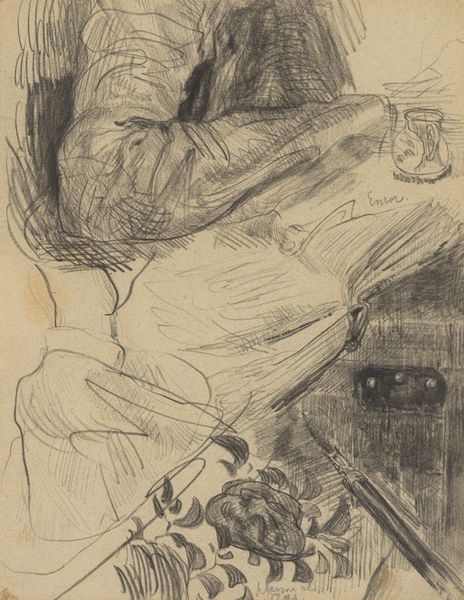
drawing, print, etching
#
portrait
#
drawing
# print
#
etching
#
pencil drawing
#
portrait drawing
Dimensions: plate: 39.69 × 45.4 cm (15 5/8 × 17 7/8 in.) sheet: 48.26 × 53.02 cm (19 × 20 7/8 in.)
Copyright: National Gallery of Art: CC0 1.0
Curator: The piece before us, "Man Sleeping," an etching by Scip Barnhart from 1994, portrays a moment of quiet vulnerability. Editor: The stark, linear quality immediately gives me a feeling of exhaustion, both physical and perhaps emotional. Look at how his face is pressed against what seems to be a desk or table—it speaks volumes. Curator: Indeed. Etchings such as this one allow for incredible detail, and here Barnhart uses that precision to highlight the weight of the figure's slumber. We see many portraits depicting powerful leaders or celebrated figures. How different is this portrayal, one that seems so unguarded? This artist consistently captured marginalized or overlooked subjects in society. Editor: The vulnerability is potent. Sleep, across cultures, symbolizes surrender, a temporary relinquishing of control. But there's also a tenderness here, perhaps in the very lines depicting the curve of his cheek. And look at how the hand clings to the edge—almost a need for grounding, for holding on. Curator: In considering the reception of works such as this one, we need to acknowledge how shifts in social attitudes impact their value. As societal concerns change, so do our perceptions of who is considered "worthy" of portrayal in art, which is reflected by shifts in funding, critical response, and of course the rise of documentary artwork throughout the late twentieth century. Editor: Absolutely. But it strikes me, beyond the historical context, how sleep itself carries potent symbolism. Throughout art history, it represents everything from death and oblivion, to rebirth and renewal. Does this man appear peaceful? Or is his slumber a symptom of something deeper? Curator: That tension makes the artwork enduringly interesting. Barnhart encourages viewers to reflect not just on who is depicted, but what that portrayal means within our own cultural framework and understanding of labor, rest, and value. Editor: Precisely. It transcends a simple portrait. This image is not only an etching of someone sleeping but invites us to examine the nature of rest itself, what it means, and who is allowed to truly experience it. Curator: Well put. This brief exploration reminds me again that analyzing an artwork’s social, political, and psychological weight are never mutually exclusive. Editor: Indeed, they enrich one another, revealing the myriad layers within a single, quiet image.
Comments
No comments
Be the first to comment and join the conversation on the ultimate creative platform.
